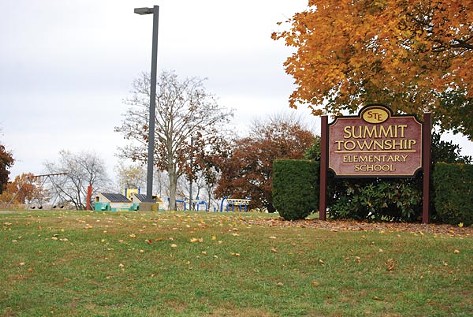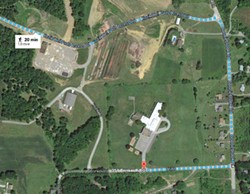
Two miles. One mile. A half mile. A local watchdog organization counted the number of fracking wells within these distances of schools, day-care centers, nursing homes and hospitals in Pennsylvania. The final tally: hundreds. Now parents are speaking out, and lawsuits are pending.
“Drilling is an extremely industrial process,” says Stephen Riccardi, of PennEnvironment, the organization that released the report, entitled “Dangerous and Close,” last week. “Having all of this going on so close to a school seems practically crazy.”
The report found that, in Pennsylvania, there are 166 schools, 165 day cares, 21 nursing homes and six hospitals within one mile of permitted unconventional natural-gas drilling, or fracking, well sites. (The report’s parameters included not only the actual hydraulic fracturing process, but also activities like construction and processing.)
Within a two-mile radius, the number of schools and day cares reaches nearly 500 each. PennEnvironment, along with several other environmental groups, community members and parents are calling on the state to enact stricter laws.
“We’re advocating a one-mile minimum setback of all gas development, not just well pads, from schools, because this helps with the safety aspect as well as the health impacts for children,” says Patrice Tomcik, of the group Moms Clean Air Force. She has two children in the Mars Area School District, in Butler County’s Middlesex Township, which loosened zoning rules to allow drilling in 90 percent of the town. A fracking site sits a little more than a half-mile from the school’s campus.
Environmental groups and residents sued the township over the new zoning, and they’re awaiting a Nov. 6 hearing. For now, activities at the well pad have been suspended; a Butler County Common Pleas Court judge issued a stay this past summer.

A 2013 state Supreme Court decision on parts of Act 13, a state law governing extraction, handed zoning power regarding oil and gas development back to municipalities. (Prior to that, the state superseded municipalities.)
“That’s why this fight has become so local, township by township,” says Aaron Jacobs-Smith, an attorney for the Clean Air Council, one of the parties that sued Middlesex. “Some [towns] are trying to take a more protective approach. The hope with Middlesex is to establish this principle that you can’t put an industrial activity everywhere. It’s not fair to your citizens.”
One of the most blatant instances is in Summit Township, where a well pad is operating just 700 feet from Summit Elementary school in Butler County. State records show that in 2013, XTO Energy, the well operator, was cited for two violations, one for not properly storing waste and the other for discharging waste without a permit.
Statewide, PennEnvironment found more than 220 violations at wells within one mile of a school, 180 violations within one mile of day cares, 28 within one mile of nursing homes and 13 within one mile of hospitals.
The report cites studies regarding proximity to fracking activities and impacts on air, water and quality of life.
“All the research indicates proximity being a concern as it relates to health symptoms and health outcomes,” says Raina Rippel, director of the Southwest Pennsylvania Environmental Health Project, which investigates health symptoms in residents near fracking. “We see increasing concern related to prenatal exposures for pregnant women.”
Rippel refers to studies cited by the PennEnvironment report, published this year and exploring the relationship between how close pregnant mothers lived to fracking sites and low birthweights. While researchers say the association doesn’t prove that fracking causes low birth rates, they say it’s concerning and warrants more in-depth research.
“We don’t think it can be safely done anywhere near any population, especially vulnerable ones such as children and the elderly,” says Diane Sipe, of the advocacy group Marcellus Outreach Butler. Her organization tracks well sites in Butler County and distributes Google Earth images of their proximities to schools. “We are dashing headlong with this process when we don’t even know the full extent of the ramifications.”














